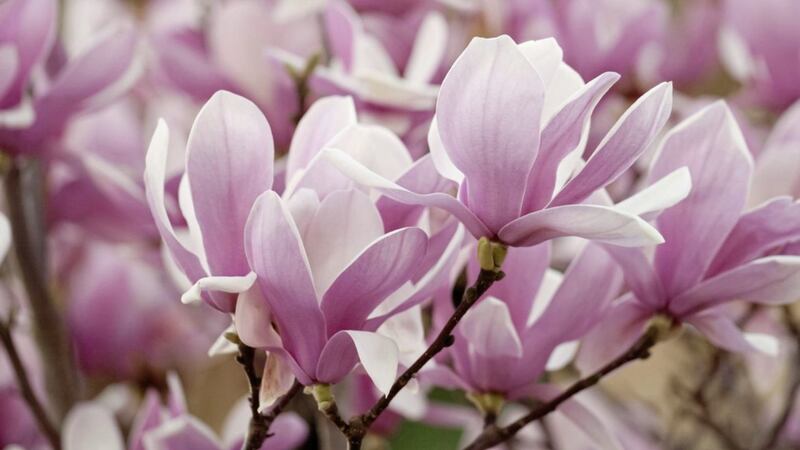MAGNOLIA has a bit of an image problem. It’s the word rather then the plant/flower but there’s definitely a negative association.
It was in the 1950s with the growth of marketing and the aspirational lifestyle that the paint colour ‘Magnolia’ was born – a creamy, stone-like, inoffensive, neutral colour that was near ubiquitous in the closing decades of the 20th century. The intention was right – ‘Magnolia’ was meant to convey exoticism and good taste but also an unconventional marriage of robustness and beauty. We associate magnolia with the advent of spring – delicate, beguiling flowers coming into bloom while there’s still a chill in the air.
However, overuse and an aged look reminiscent of nicotine staining meant magnolia-paint came to represent everything that was bland and boring.
Perhaps the only way you can banish this negative association is to plant one in your garden, or at least feast your eyes on one or more over the coming weeks.
A native of the Americas, magnolias come in various sizes and can be semi-evergreen, evergreen or deciduous. Their flowers range in colour from whites and yellows to pinks and purples. Although generally associated with spring flowering, some species flower much later.
The blooms on early flowering varieties will be unfurling over the coming weeks ahead of their stunning spring display, which is complemented by a delicate scent in the air. There’s no doubt magnolias can be a little difficult at times, but the rewards they provide justify the effort.
The one thing magonlias perhaps have in common with their paint namesake is versatility. With this genus, we are spoilt for choice.
An all round popular choice is Magnolia stellata. This deciduous shrub has a compact, bushy habit so it’s ideal in smallish spaces, growing only to 1.5m-2.5m after 10 years. It is a fabulous choice for pots and with the right care this plant will develop into a compact, well-shaped tree. It flowers profusely in early to mid-spring, producing big (12cm across) tough yet delicate-looking flowers, which are sometimes pure white, sometimes faintly pink-flushed. After the flowers, light green leaves appear.
A bigger tree producing similar shaped, but pale lilac pink flowers is Magnolia x loebneri ‘Leonard Messel’, which flowers profusely and reaches around 8 metres at maturity.
Magnolia Soulangeana is a large deciduous shrub or small tree with the most fabulous pastel pink and white flowers which emerge on bare branches in spring. This plant is commonly called the ‘saucer Magnolia’ and is known for being comparatively easy to grow. It is relatively tolerant of wind and alkaline soils, growing up to 15m and a width of around 6m.
Magnolias really can be the spring showpiece of a garden. Put the big ones in prominent positions or with other trees in woodland garden situations – but give them plenty of room to show off. Most prefer soil tending towards acidic, although some, including Magnolia stellata and Magnolia x loebneri, are happy in alkaline soils. The emerging buds on the spring flowering varieties can be damaged during cold snaps, so avoid planting in frost pockets. Exposed, windy sites should also be avoided.
They are very light on maintenance, needing nothing more than a trim in late winter to remove any untidy shoots that spoil the framework. Where branches have been damaged or need to cut back due to space constraints, pruning should be carried out when the tree is in full leaf, giving the tree plenty of time to heal.
Do not cut back every branch, but instead select the highest- or widest-growing branches, thus retaining an attractive and natural looking shape.








